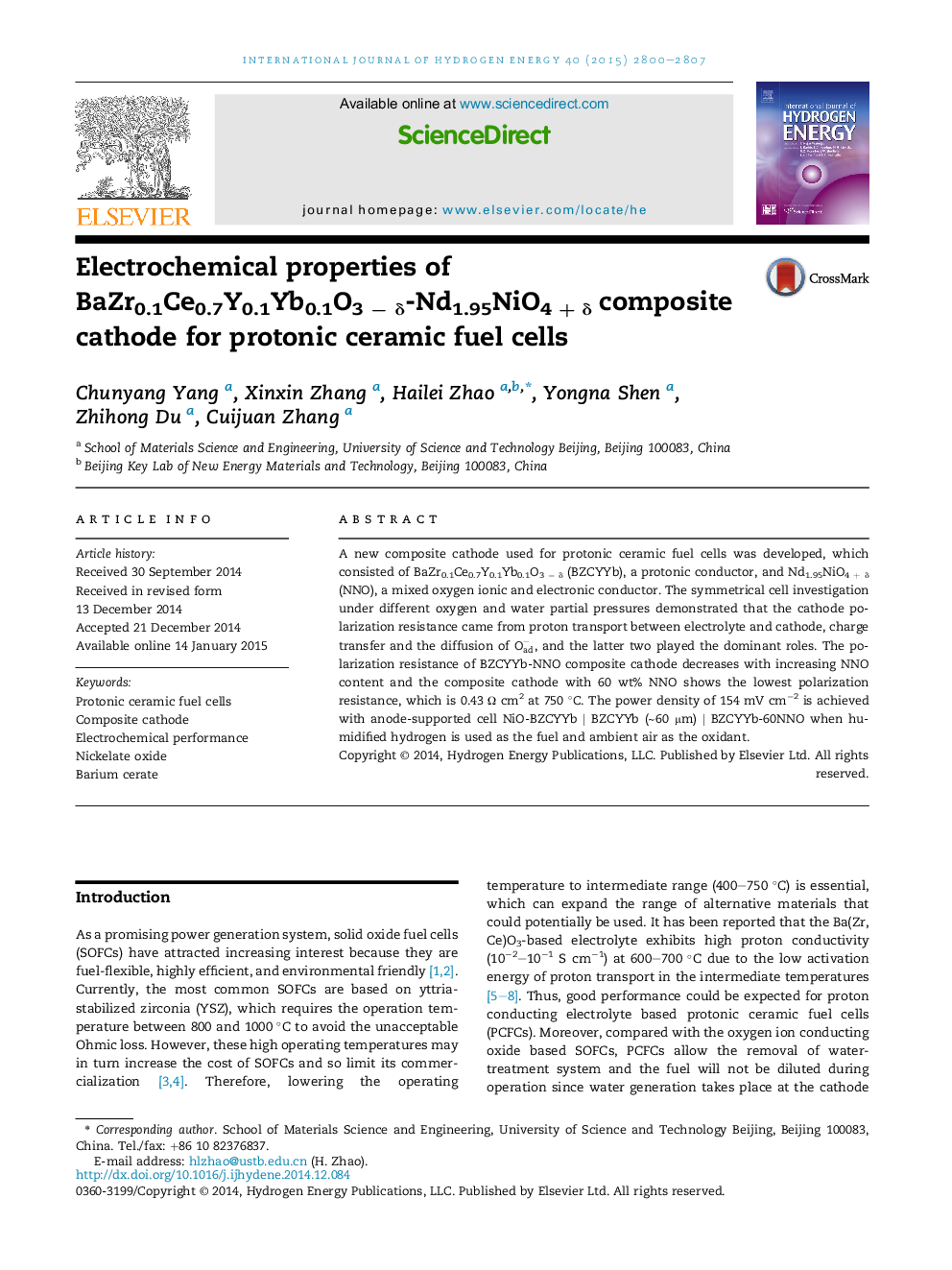| Article ID | Journal | Published Year | Pages | File Type |
|---|---|---|---|---|
| 1270045 | International Journal of Hydrogen Energy | 2015 | 8 Pages |
•BaZr0.1Ce0.7Y0.1Yb0.1O3 − δ-Nd1.95NiO4 + δ was synthesized as cathode for PCFCs.•The two components of the composite cathode exhibit good chemical compatibility.•Charge transfer and diffusion of Oad− are rate limiting steps of cathode reaction.•The cathode with 60 wt% Nd1.95NiO4 + δ shows the best electrochemical performance.
A new composite cathode used for protonic ceramic fuel cells was developed, which consisted of BaZr0.1Ce0.7Y0.1Yb0.1O3 − δ (BZCYYb), a protonic conductor, and Nd1.95NiO4 + δ (NNO), a mixed oxygen ionic and electronic conductor. The symmetrical cell investigation under different oxygen and water partial pressures demonstrated that the cathode polarization resistance came from proton transport between electrolyte and cathode, charge transfer and the diffusion of Oad−, and the latter two played the dominant roles. The polarization resistance of BZCYYb-NNO composite cathode decreases with increasing NNO content and the composite cathode with 60 wt% NNO shows the lowest polarization resistance, which is 0.43 Ω cm2 at 750 °C. The power density of 154 mV cm−2 is achieved with anode-supported cell NiO-BZCYYb | BZCYYb (∼60 μm) | BZCYYb-60NNO when humidified hydrogen is used as the fuel and ambient air as the oxidant.
